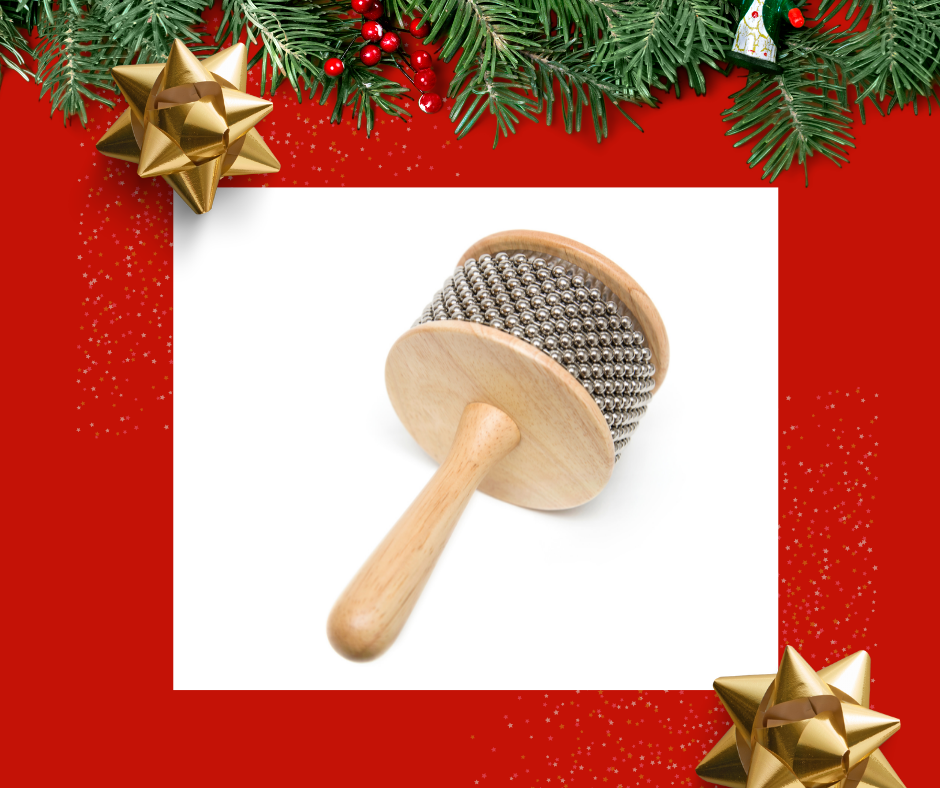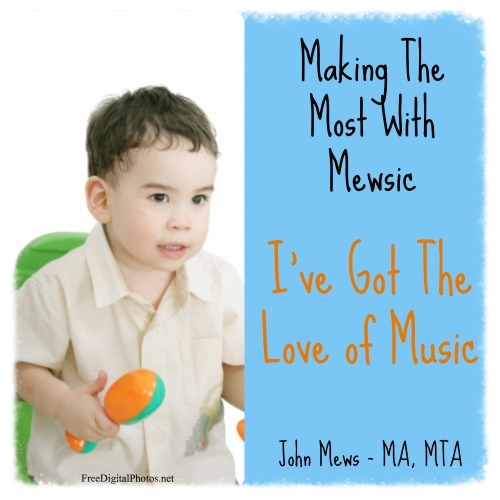
BLOGS
Educational blogs for parents and professionals
Mewsic Moves Spotlighted in Undivided Article for Transformative Music Therapy Approaches
In a recent blog by Undivided, Mewsic Moves was highlighted for its impactful use of music therapy to support neurodiverse clients and those with neurologic conditions throughout Los Angeles. The article provides an introduction to music therapy, explaining its benefits, especially for children with disabilities. It also discusses how Mewsic Moves tailors therapeutic approaches to meet the unique needs of each individual, using music as a powerful tool for communication, emotional expression, cognitive and physical development.
You can read the full article here.
Thank you Undivided for all the support you provide! Check them out here:
John Mews, LMFT, NMT
Top 5 Therapeutic Musical Toys For Children Of All Abilities: With Video Resources
After writing our first top therapeutic toy blog back in 2014, “TOP 10 MUSICAL TOYS FOR CHILDREN WITH AUTISM” and having it as our top read blog we continued to write again in 2020, “TOP 11 THERAPEUTIC MUSICAL TOYS FOR CHILDREN WITH SPECIAL NEEDS”. Since both of these resource lists has been such a popular read we would love to continue our holiday tradition and offer you yet another music therapy toy/instruments resource list! Plus much more this year!
Everyday we use unique, fun, motivational and engaging music instruments in our music therapy programs to help address multiple goals. Many family members and parents struggle during this time to find the “perfect gift” or “perfect toy” for the little ones on their gift lists, especially for some that have neurodiverse or developmental needs. We want to continue our Mewsic Moves resource holiday tradition and help you find that perfect musical toy(s) that provides exponential value.
This year we wanted to make our list not only beneficial but educational as well. So this year we are providing a short video that showcases one of our of amazing Neurologic Music Therapists, Zach, giving you a musical example of how we use the instrument as well as sharing some of the therapeutic value in each instrument. We know you will find much value in this years musical therapeutic toy list!
1. Cabasa
The cabasa is a versatile and unique instrument used in latin music that many children are drawn to as many have never seen one or used one before. It has bright shiny chains of beads that surround it and make a sound similar to a maraca as you roll the beads around the instrument. The cabasa ranges from large or smaller sizes as well as plastic or wood. We prefer the larger wooden cabasas as they provide better weight for proprioceptive input and pressure.
Cabasa can support:
Sensory processing & integration
Regulation
Body awareness
Speech and communication
Palmer grap control
For more details or to buy click here
2. Xylophone
The xylophone is one of our most used instruments as its transportable, easy to carry, and mimics the tonality and notes of a piano. The xylophone that we are adding to our list this year is one of our favorites as it can fold in half and some come with a carrying case. You can use one side as the major scale (similar to
white notes on piano), and the other side (the black notes) can be used to improvise songs together on a pentatonic scale which is fun to use as there are “no wrong notes”. We also love to add colored stickers to our xylophones and play music together through colors versus actual notes. It makes playing easier, fun and much more successful.
Xylophone can support:
Sustained attention
Joint attention
Communication skills (completing circles of communication)
Cognitive and impulse control skills (stop and go)
Turn taking
Eye-hand coordination
Gross motor skills
For more details or to buy click here
3. Ocean Drum
The ocean drum comes in many sizes and we prefer smaller size that can fit in a younger child’s hands. The ocean makes a beautiful and peaceful sound of the ocean as you tilt it back and forth. It can also create loud crashing wave sounds if you play and tilt it faster. The ocean drum we have chosen this year provides a visual appeal with under water display of fish and has a transparent top so you can see the beads rolling which often is a visual anchor and sensory support for many of our clients.
Ocean Drum can support:
Regulation
Sensory processing and integration
Turn taking
Cognitive control
Motor control and modulation
Sustained attention
Mindfulness and meditation
For more details or to buy click here
4. Hand/Desk Bells
Our younger clients love these bells! They are colorful and you can play them by pressing the handle or lifting them and striking them like a traditional bell. These bells also have a color sequence that aligns with the Cmajor scale that we use to work on color matching, sequencing, early music education and much more!
Hand Bells can support:
Working memory
Sequencing
Turn taking
Communication
Cognitive skills - colors and counting
Early music education
Early reading skill development
For more details or to buy click here
5. Gathering Drum
The gathering drum is a fun communal drum that sits on the floor and is perfect for circle time or gathering around with friends or family to join and play together. We prefer the larger gathering drum as it holds much space for friends to join around and it also provides a large deep base sound that fills the room as well as deep into your body. The gathering drum is one of our favorite drums to use as it can also help support impulse control as it has a large range in sounds from big and vibrational to more subtle and soft.
Gathering drum can support:
Cognitive control
Joint attention
Sustained attention
Modulating emotions
Self regulation
Co-regulation
Provides proprioceptive feedback
Speech & communication
Social goals
Bonding
For more details or to buy click here
I hope you find value in this list as well as the educational videos that we have provided to help give you some guidelines on how to use these instruments in a therapeutic way. We are always excited to share our resources with you to use with your family at home or with your clients in your office or schools. Music is truly motivational and transformational and we love to share the gifts of music with you. Please feel free to reach out to us if you have any questions about the appropriateness of any instruments with your child or clients.
All of us at Mewsic Moves wish you and your family a musical holiday!
Gift the gift of music this holiday season.
Let's be social:
PLEASE SHARE, PIN, LIKE AND LEAVE YOUR COMMENTS BELOW AS WE LOVE TO HEAR FROM YOU!
Autism Parenting Magazine Lists Music Therapy/Mewsic Moves as a Resource!
I've had the privilege of writing multiple articles for the autism parenting magazine over the past few years. They have covered many great topics and have been an amazing resource for parents, educators and therapists over the years. Some of my articles they've published are:
Last year the Autism Magazine also awarded us with the Top Music Therapy Writer for their magazine in 2014!
Just last month they have created an online resource for parents and I am so excited to announce that Mewsic Moves has made the list! We are so grateful to the Autism Parenting Magazine for all they do for families across the country, online and around the world. Thank you for being such a great tool and resource for so many.
You can find the resource list by clicking HERE.
You can also get your FREE copy of the Autism Parenting Magazine by clicking HERE.
Please share this resource with families of children with special needs and others who may benefit from any of these resources.
Let's Stay in Touch!
For FREE songs, videos and tips on how to support children with special needs through music click here.
Please share, like and leave your comments below as we love to hear from you.
Learning Concepts Through Music Therapy
Have you ever asked your child to put something "in" the box and he/she puts in elsewhere? Then it is most likely that you child may have challenges with differentiating basic concepts such as in, on, over and under.
I have worked with many children who are confused with these everyday concepts and have no idea how to differentiate between in, on, over and under. This is a common challenge for most children and especially common for children with special needs and those on the autism spectrum disorder.
Over and over again I have parents and other professionals asking me how I teach children how to differentiate between these concepts. I simple tell them, "I use music" as a fun and motivating tool to help them learn, understand and practice these basic concepts.
Just the other day I used the drum to help a 3 year old boy on the spectrum differentiate between "on", "under" and "in". We were singing 5 Little Monkeys jumping on the DRUM. I revamped the lyrics to make it more applicable in our music therapy session. When we were done with the monkey I asked him to put the monkey in various locations such as, "on the drum", "in the drum" and "under the drum". The little guy had so much fun hiding the monkey in all the areas he had no idea he was learning these concepts.
After this session I was inspired so I wrote a song to help you and your child learn these basic concepts through music. Feel free to adapt the words of this song to make it your own as well as to match the concepts to the particular environment for you and your child. In this song I kept all the concepts familiar to a music therapy setting (as it's mostly my working environment), but you may want to adapt the lyrics to school or home. For example, the first line is "I put my mallets in the box when it's clean up time". You may want to change it to, "I put my crayons in the box when its clean up time.
Please feel free to share your personal lyrics with us as we love to hear from you!
I hope you and your child will have fun learning these basic concepts and finding creative new lyrics to adapt to your particular environment. Have fun making the most with MEWSIC!
Download the song here! or by clicking the image to the right.
Click below to hear a sample of the song.
Let's Be Social
Please share, pin, like and leave your comments below as I love to hear from you!
For FREE songs, videos and tips on how to support children with special needs through music click here.
Image Courtesy of Tuelekza/freedigitalphotos.net
Top 5 Qualities to Look For in a Music Therapist
I recently read a blog on the top 5 qualities to look for in an individual therapist or family therapist. It got me thinking. What do parents or other professionals look for in a music therapist? What are the key qualities to look for in a music therapist?
Here are the qualities I have come up with for top 5 qualities to look for in a music therapist working with children.
1. Team Player
It is very important to find a music therapist who works well in a multi-disciplinary team. When I first began my practice I was so "green" and I consulted with other therapists such as Occupational, Physical and Speech Therapists. I learned so much from them and more over, I learned how to work together to make sure the best success was achieved for the child. Make sure that your music therapists has a wealth of consulting and works well with others in the child's team support system.
2. Creative and Fun
It is important for a music therapist to be creative. It is often imperative that a music therapist be able to make up songs and activities "on-the-spot" to match your child to where they're at. A music therapist often needs to adapt songs and activities to engage or motivate a child in the desired activity to achieve various goals.
3. Adaptable & Knowledgable
Just because a music therapist has a bachelor or masters degree it doesn't end there. Music therapists are required to follow up on continuing education and researching the latests educational resources in their specialized client population.
4. Compassionate and Patient
Working with children with special needs, especially autism can be most challenging at times. It is very important that the music therapist you are seeking to work with your child has a deep desire and compassion to work with children with special needs. You have every right to ask your therapist what inspired them to choose to work with children with autism. It is also crucial that music therapists working with children with autism have a great deal and gift of patience. Considering children with autism function and experience the world in different ways than we do, it is crucial that the music therapist you choose has a great deal of patience in waiting and understanding how your child acts or reacts in certain situations.
5. Problem-Solver
Working with children with special needs considers a great deal of problems-solving skills. It's imperative that the music therapist that you choose can "think on their feet" and come up with a solution that your child is dealing with through a musical activity or therapeutic intervention. You can simply ask your therapist in an interview, "what is the most challenging client you have worked with and how did you problem-solve to come up with a solution?"
I hope you find this list helpful in choosing the music therapist that is the best fit for you and your child's needs. For a list of music therapist in your area you can contact your local music therapy association or the American Music Therapy Association website.
If you have other qualities that you think are important I would love to hear from you, please write them in the comment section below.
Let's Be Social
Please share, pin, like and leave your comments below as I love to hear from you!
The Reason I Jump: Understanding Autism - "A Must Read"
The Reason I Jump by Naoki Higashida (translated into English by David Mitchell and KA Yoshida)
Have you ever wondered why those with autism jump, flap their hands or make high pitched noises? This book answers all those questions that I once had as a student in this field. Rarely do I read a book all the way through in a week, let alone one night, but this one I just could not put down. I first heard about this book through social media posts, and then when I saw John Stewart interview co-author David Mitchell on The Daily Show. I ordered the book on Amazon the next day.
I wish this book was available to me when I first started my career as a music therapist! This book offers tremendous insight into the inner world of those living with autism, and does a great job explaining the reasons for various behaviors and reactions. This book gives answers to questions that took me many hours to understand with my clients. This book will serve as a refresher for those with lots of clinical experience with this population. For everyone else, this book is a great read and a real eye opener about what it means to live with autism.
This book answers many questions many of you have likely pondered including:
- Why do you make a huge fuss over tiny mistakes?
- Why do you flap your fingers and hands in front of your face?
- Is it true that you hate being touched?
- Why don't you make eye contact when you're talking?
- Why can you never stay still?
One of my favorite sections from the book relates to how people talk to those with autism. The interviewer asks the question, "Do you find childish language easier to understand?" Naoki, a 13 year old with autism replies , "whenever anyone treats me as if I'm still a toddler, it really hacks me off." I observed this many times in my practice, and this was mostly done by their parents! I have long encouraged parents to speak in an "age appropriate" manner, both with language and expectations. There are lots of gems like this in the book, and I highly recommend this book to all professionals working with this population.
Get your copy now by clicking here!
You can also find other books on understanding autism below:







































